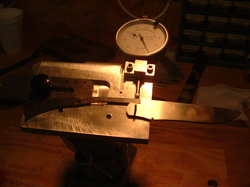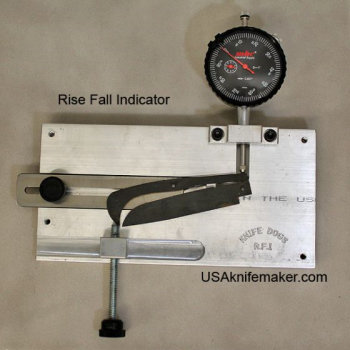C Craft
Well-Known Member
So the tittle says it all, what is the best steel for a pocket knife. Up till now I have worked with the series 1075 - up to 1095. However I had a request for a pocket knife and I am not sure where to go with this.
I feel I need something that can be HTed without specialized equipment, (pretty much using what I have now) I mostly quench in Parks #50!! I have used Canola oil for some needs!
I want to use something that has virtually no chance to rust! So I am scared that none of the 1075 - 1095 are going to meet that standard! I have had them take a rust on the bench. The humidity here in Florida is a mean taskmaster to deal with sometimes!! Originally I was gonna with 1095 and do a bluing process on it. that would last for some time on the body but the blade will not have or even for that matter keep, the bluing and then letting in rust!!
However an experience I a while back trying to sharpen a pocket knife for my son. It was made by Spyderco, the steel was marked as CPMS30V! I had a devil of a time getting it too come up with a good edge. You can reference this thread!! https://knifedogs.com/threads/pocket-knife-refuses-to-put-on-an-edge.47302/
Lets face it there is a good portion of the people who carry a pocket knife really do not know how to actually sharpen it. And if it is a steel such as the CPMS30V is used, it makes it that much harder!! So no rust, yet easy to put and edge on it. Personally I would rather stop and hit a knife a few strokes on a good stone and have it back to razors edge, than to have a steel that is hard to get that edge on! So I want something that won't rust, yet something that will take an edge easily.
I feel that a true pocket knife would be best from a thinner steel! While this one the guy wants is to be a lock back knife and I feel it would benefit from thicker steel!
1. So guys I am looking for some recommendations on steel that may hit the parameters I just spoke of!
2. I also would like recommendations on width and thickness of such steel. For a true pocket knife and a lock back knife!
So I told the guy this would be my first folder, (other than some friction folders) and when I got done. Then I will decide on whether I would sell it too him or give it too him!! LOL
Either way I want the experience, of building a folder. This is not the first request for a folder! It is however the first time I got serious about making one, other than the experience of the friction folders!!
I feel I need something that can be HTed without specialized equipment, (pretty much using what I have now) I mostly quench in Parks #50!! I have used Canola oil for some needs!
I want to use something that has virtually no chance to rust! So I am scared that none of the 1075 - 1095 are going to meet that standard! I have had them take a rust on the bench. The humidity here in Florida is a mean taskmaster to deal with sometimes!! Originally I was gonna with 1095 and do a bluing process on it. that would last for some time on the body but the blade will not have or even for that matter keep, the bluing and then letting in rust!!
However an experience I a while back trying to sharpen a pocket knife for my son. It was made by Spyderco, the steel was marked as CPMS30V! I had a devil of a time getting it too come up with a good edge. You can reference this thread!! https://knifedogs.com/threads/pocket-knife-refuses-to-put-on-an-edge.47302/
Lets face it there is a good portion of the people who carry a pocket knife really do not know how to actually sharpen it. And if it is a steel such as the CPMS30V is used, it makes it that much harder!! So no rust, yet easy to put and edge on it. Personally I would rather stop and hit a knife a few strokes on a good stone and have it back to razors edge, than to have a steel that is hard to get that edge on! So I want something that won't rust, yet something that will take an edge easily.
I feel that a true pocket knife would be best from a thinner steel! While this one the guy wants is to be a lock back knife and I feel it would benefit from thicker steel!
1. So guys I am looking for some recommendations on steel that may hit the parameters I just spoke of!
2. I also would like recommendations on width and thickness of such steel. For a true pocket knife and a lock back knife!
So I told the guy this would be my first folder, (other than some friction folders) and when I got done. Then I will decide on whether I would sell it too him or give it too him!! LOL
Either way I want the experience, of building a folder. This is not the first request for a folder! It is however the first time I got serious about making one, other than the experience of the friction folders!!
Last edited:


